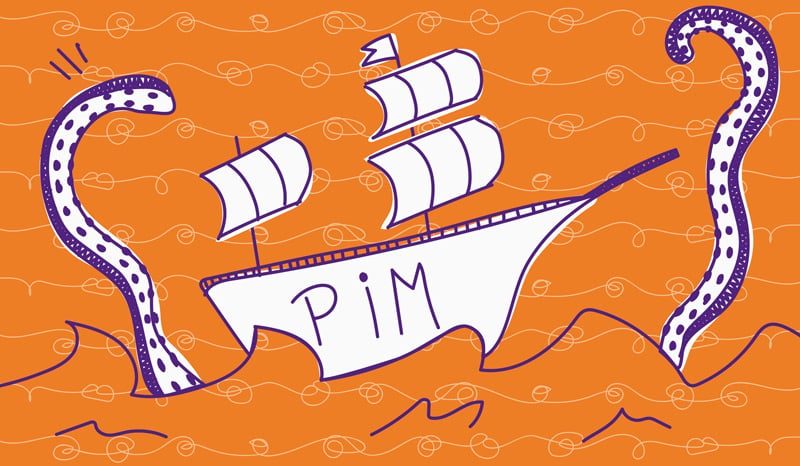Anyone selling online knows how important it is to offer the right products to the right customer at the right time. Failing to do so will cost you sales, customer loyalty and retention, and profitability. But how do you avoid that? With efficient demand forecasting and planning.
It’s important to remember that customers are not involved in business operations, nor do they care about why you don’t have the product that they want at that specific moment. All they see is that you don’t have the product, and so they will go search for it where they can get it.
Let’s say you’re a fashion e-tailer; now imagine this scenario:
A customer discovers a red leather jacket on your web store (or any of your other sales channels). They love it and want to buy it, but the size 'Medium' is sold out. Much to their disappointment, they leave the page but hope for a restock. A few days later, the same customer decides to come back. Still, the 'Medium' is unavailable. At this point, the chances of them coming back to your store are slim. And sadly, you’ve done your business a disservice by not replenishing stock properly because you didn’t realize that the product will be popular.
Suffice to say that customer satisfaction hinges on you meeting customer demands, at all times, with no excuses. But this begs the question: how do you know what customers want?
Well, that’s where demand forecasting comes in.
What is demand forecasting?
It's the process of predicting the most demanding products over a certain period of time.
To do that, you need to study market trends and the performance of all of your products (new and old) using historical and real-time sales data. Knowing what products under-sell or sell better allows you to identify patterns that will help you predict which products will sell in the future. It takes away the guesswork and gives you insights to leverage for inventory planning.
Why is demand forecasting crucial?
Because customers’ needs change all the time.
What was popular last month or even a year ago may not be as popular tomorrow. Not to mention that boots that were selling like hot cakes in winter will not be as popular as sandals in the summer. So, paying attention to trends and product performance enables you to make data-driven inventory decisions for a better market response. On top of that, it helps you avoid:
- Overstocking—leading to unwanted products gathering dust on shelves
- Deadstock— leading to paying for excess warehouse space for unsellable products
- Understocking—leading to dissatisfied customers
- Over or under-use of resources such as staff
Overall, demand forecasting helps you reduce risks that can cost your business money that can be of better use in other parts of your organization’s operations, like marketing, for instance.
In addition, it helps you create better pricing strategies. For instance, when looking at previous data on high-demand products, you'll get a good idea of what customers are willing to pay.
Should you predict demand short-term or long-term?
It all depends on what you’re hoping to achieve. With short-term predictions, you’re looking at data to help you forecast for the next 3-12 months, while long-term at beyond 12 months.
1. Short-term forecasting
For this type of forecasting, you’re looking at factors such as demand based on seasonality, holiday, or annual event such as Black Friday/Cyber Monday. If there was a high demand during a specific season, chances are the demand will be high again when the season hits or the event is oncoming. For example, Christmas sweaters that were popular before last Christmas have a likelihood of going back into demand as soon as the Christmas season hits. Another example is if you’re selling in the US and your products are popular during the Super Bowl week, chances are they will be in demand again when it comes around. That means you’ll need to increase your stock for these specific products more than usual to cater to the upcoming demand.
2. Long-term forecasting
This is a broader prediction based on how demand might change over a long(er) period due to changes in the market, tech advancements, economic landscape, etc. For example, if you're a new cosmetics brand and you notice that you’re selling more units than ever before, that signals growth. So, it may be time to ramp up production, improve your supply chain strategies, and expand to a new market via a marketplace or a pop-up store in a new region.
Now you’re wondering…
Why does the quality of data matter for demand forecasting?
Whichever method you choose, there’s a good amount of information to draw from.
Ecommerce systems such as Inventory Management or Enterprise Resources Planning (ERP) are the best sources to start with. That’s because they have all of the product information you need—from what's being manufactured to what's leaving the warehouse to what's on shelves.
This data mining process is exactly what will require quality product information. Making decisions based on inaccurate information will hurt your business. If you predict demand for a product that you think will be popular in January based on an error when in fact, the said product was popular in March, you’re making a mistake. You’re overstocking at the wrong time, not at peak demand, which will lead to a slow-moving product and unnecessary costs.
To avoid such costly mistakes, you need to power your ecommerce tech stack with complementary systems that work well together. A product information system (PIM) is a well-rounded solution that acts as a central repository for all kinds of product data and assets.
The best PIM for ecommerce will integrate PIM and ERP data to enable a wide overview of product data in a single location. This saves you time and effort in managing enriched content and doing analysis as you won’t have to juggle multiple systems to get the job done.
Plytix, for example, is a product information management software with data validation capabilities to ensure copy is accurate at all times. That way, when it’s demand forecast o’clock, you know you’re working with good quality data, and your predictions will stand a higher chance of success. For more on how Plytix can help you in your product planning, book a demo! Additionally, download this FREE white paper on how PIM and ERP work together.




